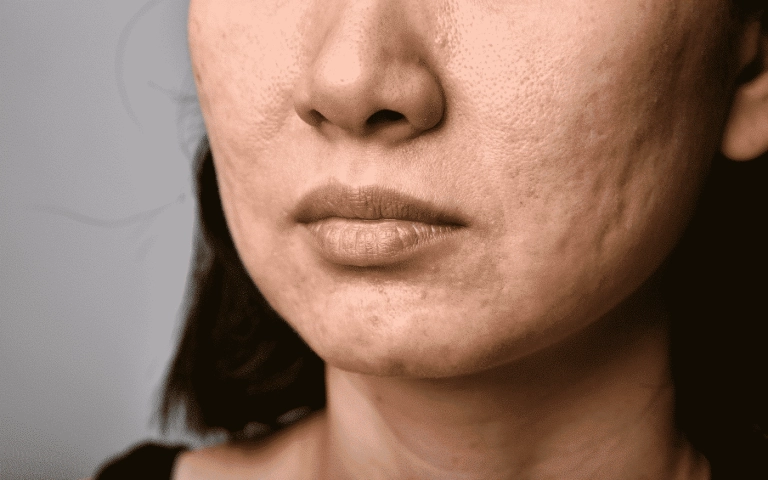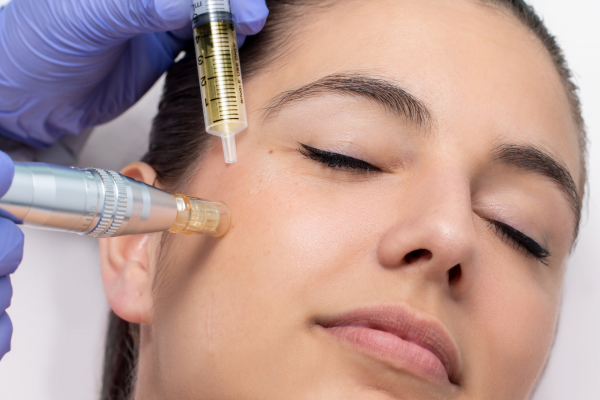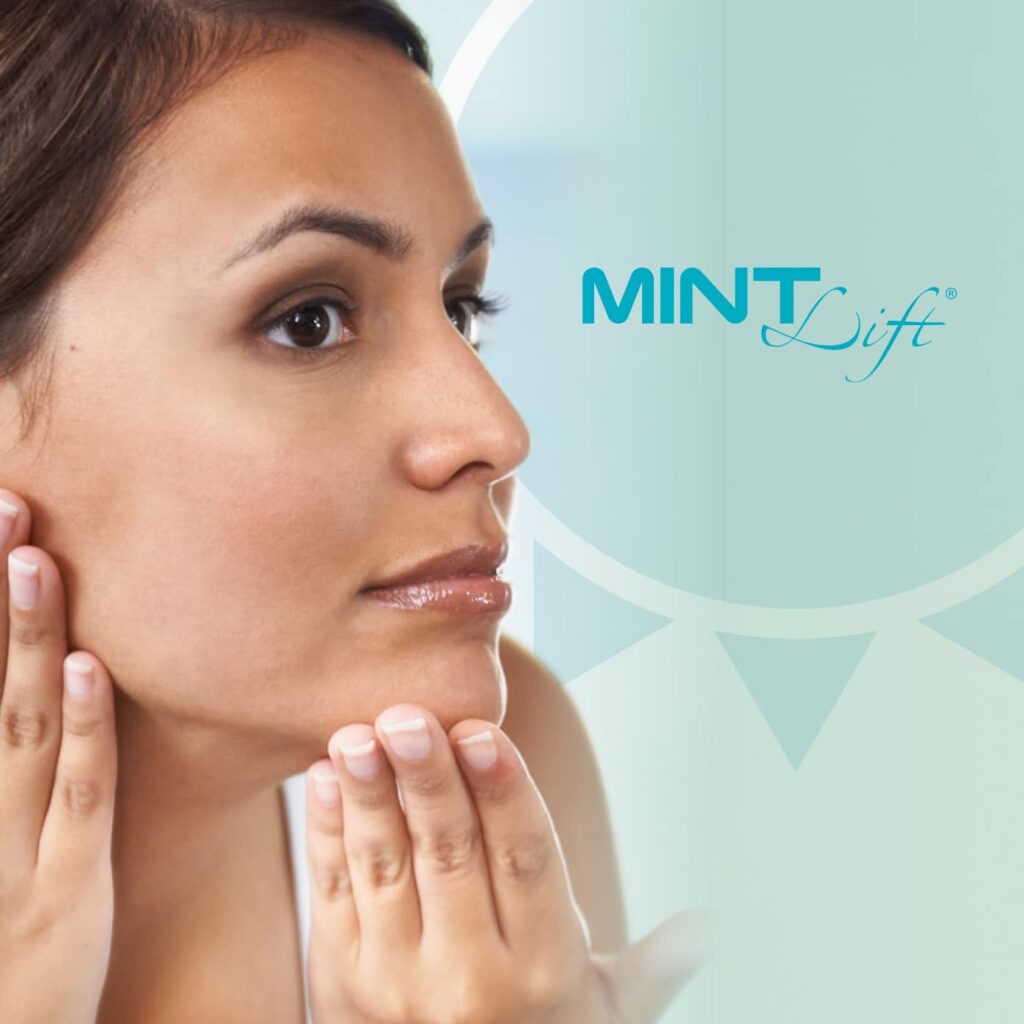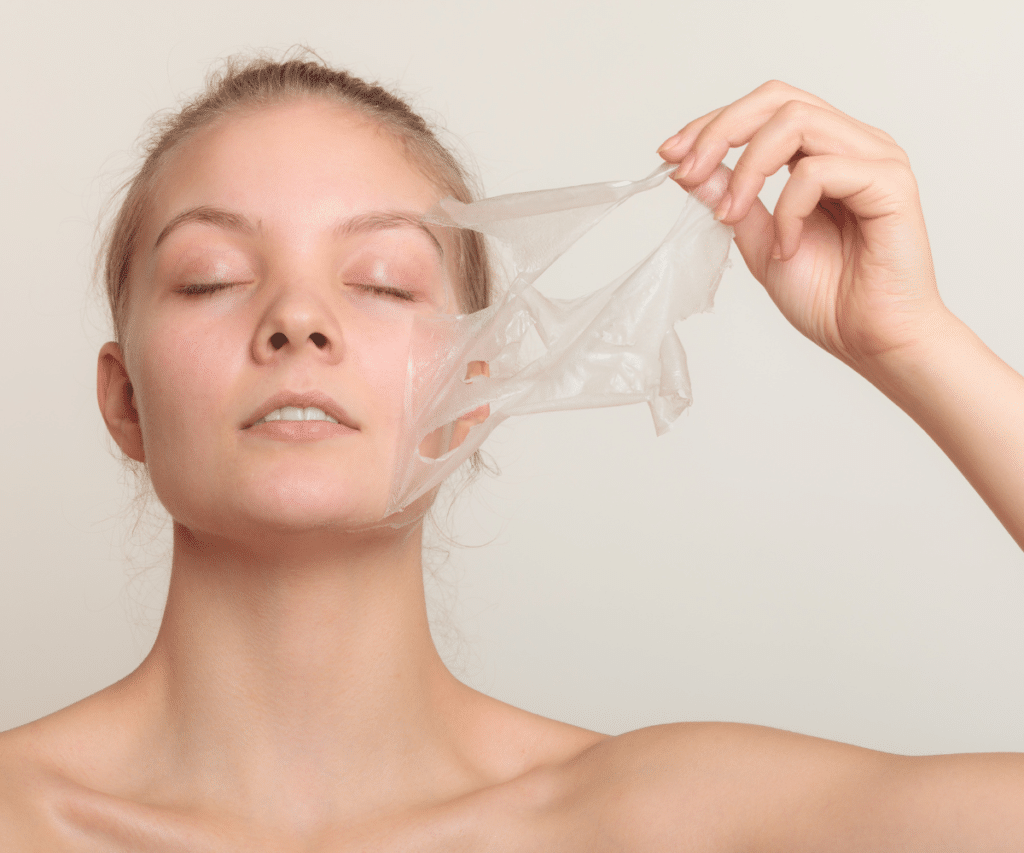Get Rid Of Acne Scars And Restore Your Confidence
Scarring after an acne outbreak is common in the general population. Even after healing, scars can cause emotional distress and affect one’s quality of life. Getting rid of acne scars is more than achieving clear skin. It’s also about rebuilding confidence and feeling comfortable in your own skin.
Thanks to recent advancements, numerous effective treatments are available today. Let’s look into our treatment options at Satini Cosmetic Clinic in Christchurch.
| PRP Plasma |
|---|
| Very effective |
| Lasts for 12 to 18 months |
| Three initial treatments |
| Microneedling |
|---|
| Effective |
| Lasts for approx 12 |
| Three initial treatments |
| Chemical Peels |
|---|
| Effective |
| Lasts for approx 12 |
| Three initial treatments |
| Dermal Filler |
|---|
| Only large, rolling scars |
| Lasts for 9 to 12 months |
| One Treatment |
PRP Plasma for Acne Scars
This popular treatment uses your own blood to smooth acne scars. The doctor takes a small amount of your blood, spins it in a machine, and then injects some of your plasma under the scar.
This stimulates the body’s natural healing process, leading to smoother and more even skin. PRP plasma therapy is safe and natural to reduce acne scars without surgery or harsh chemicals.
Microneedling
Microneedling is another popular treatment option offered at Satini Cosmetic Clinic. This process involves using a tool with small needles to make tiny cuts in the skin.
This encourages collagen growth and improves skin appearance. Microneedling can help improve the appearance of acne scars, fine lines, wrinkles, and overall skin texture.
Research shows that combining PRP Plasma with Microneedling can effectively treat atrophic acne scars. Microneedling helps create new collagen and helps the skin absorb PRP, a platelet concentrate obtained from the patient’s blood.
Debriding of acne scars by a doctor
This procedure can further enhance the results of PRP plasma therapy and microneedling. The doctor gently removes scar tissue underneath the scar. After that, the skin underneath the scar will start healing and look smoother and evener.
Chemical Peels
Chemical peels are another effective option for reducing acne scars. Applying a natural acid to the skin exfoliates the top layer, revealing new skin. This process can help to fade acne scars and improve overall skin texture.
Chemical peels are a popular choice for those looking to improve the appearance of their skin. This treatment is quick, affordable, and can occur in a clinic setting. The results are often noticeable after just one treatment, with continued improvement over time. Salicylic peels, in particular, can target acne scars and promote smoother, clearer skin.
PDO Threads
PDO Threads are another innovative treatment option for acne scars. Inserting dissolvable threads under the acne scars stimulates a type of smooth collagen that gradually replaces scar tissue. Doctors place the threads with fine needles to lift and smooth scars.
The threads are biodegradable and dissolve over three to four months. The procedure is not too painful, but mild bruising and swelling are common afterwards. Downtime is minimal.
Dermal Filler
Doctors also use dermal fillers to fill depressed scars and stimulate the skin’s natural production. This treatment works best for larger, rolling acne scars. The doctor injects a small amount of a gel (dermal filler) right underneath the scar. This will fill the scar and make it look more even.
At Satini Cosmetic Clinic, we use hyaluronic acid dermal fillers for this. The results last 9 to 15 months before the scar becomes visible again. You have to have another treatment to maintain the results.
Laser treatment
Laser resurfacing can certainly help treat acne scars. However, there is a risk of the laser causing skin inflammation, which can cause uneven pigmentation. This risk is particularly high for people with darker skin types.
Some studies indicate that combining PRP with microneedling can be as effective as laser treatments. Additionally, this combination may have a lower risk of causing uneven pigmentation.
At Satini Cosmetic Clinic, we use PRP Plasma with microneedling as our primary treatment over laser.
How can I prevent acne scars?
Preventing acne scars starts with proper skin care and acne management. Here are a few tips on how to best prevent another acne outbreak:
Skincare
- Cleanse your skin regularly.
- Avoid picking or squeezing pimples.
- Use lightweight and thin skin care products that do not clog pores.
- Implement Vitamin B, Vitamin A and Vitamin C serums into your skincare.
- Regularly apply mild peels at home.
Acne Management
Treating acne outbreaks early with medications or topical treatments can help prevent severe acne scars from forming. So, you must see your doctor when signs of acne or new scars start forming.
- See your doctor when you have an acne outbreak.
- Use red and blue LED lights daily
- Microneedling can prevent a worsening acne outbreak.
- Mild chemical peels can prevent it from getting worse.
Doctors may consider treating your acne outbreak early to prevent scarring. Some topical treatments, like a good Vitamin A cream and skin disinfectant, can help. If the outbreak worsens, they may start you on antibiotics or Roaccutane (Vitamin A) tablets.
Eat the right foods
A few foods can cause acne outbreaks. The main culprits are chocolate and deep-fried foods like French fries. People of Asian or Indian origin suffer from acne and scarring as a result. If you love chocolate and find it difficult not to eat it, you may consider eating dark chocolate with a low sugar content.
Dairy products and foods high in refined sugars can also trigger breakouts in some individuals. Additionally, greasy and oily foods may contribute to acne flare-ups.
Protecting your skin from the sun, taking care of your skin, and managing acne are important ways to prevent acne scars.
Protecting your skin from the sun is crucial for preventing acne scars. Sun exposure can darken existing acne scars and make them more noticeable. Therefore, experts recommend using a broad-spectrum sunscreen with at least SPF 50 daily, even on cloudy days.
Follow a consistent skincare routine to prevent acne scars and maintain clear, healthy skin. Treat acne correctly and protect your skin from the sun.
What types of acne scars are there?
- There are several types of acne scars. Some types of scars require different treatment compared to other types.
Atrophic scars
- A loss of skin thickness causes so-called atrophic scars, which result in a depressed area on the skin.
Ice pick scars
- Approximately 60% to 70% of people with acne scars have ice-pick scars. Icepick scars are small, deep scars that go down into the skin. They are less than 2mm wide and have sharp edges.
Rolling scars
- Rolling scars are broad depressions with sloping edges, giving the skin a wave-like appearance.
Hypertrophic scars
- These scars appear as lumpy areas on top of the skin.
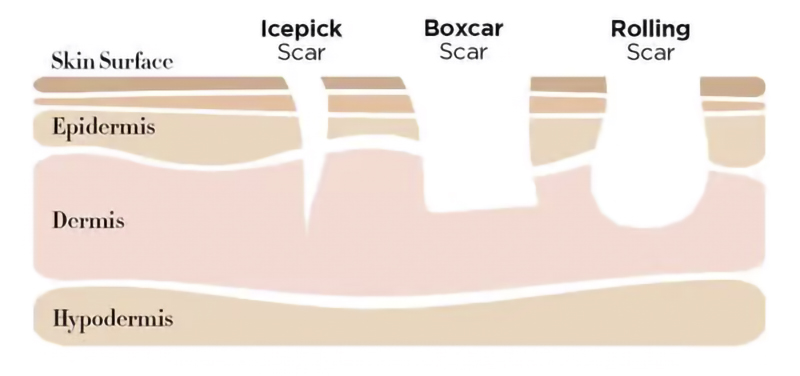
Our range of Acne Scar Treatments
Satini Cosmetic Clinic Results
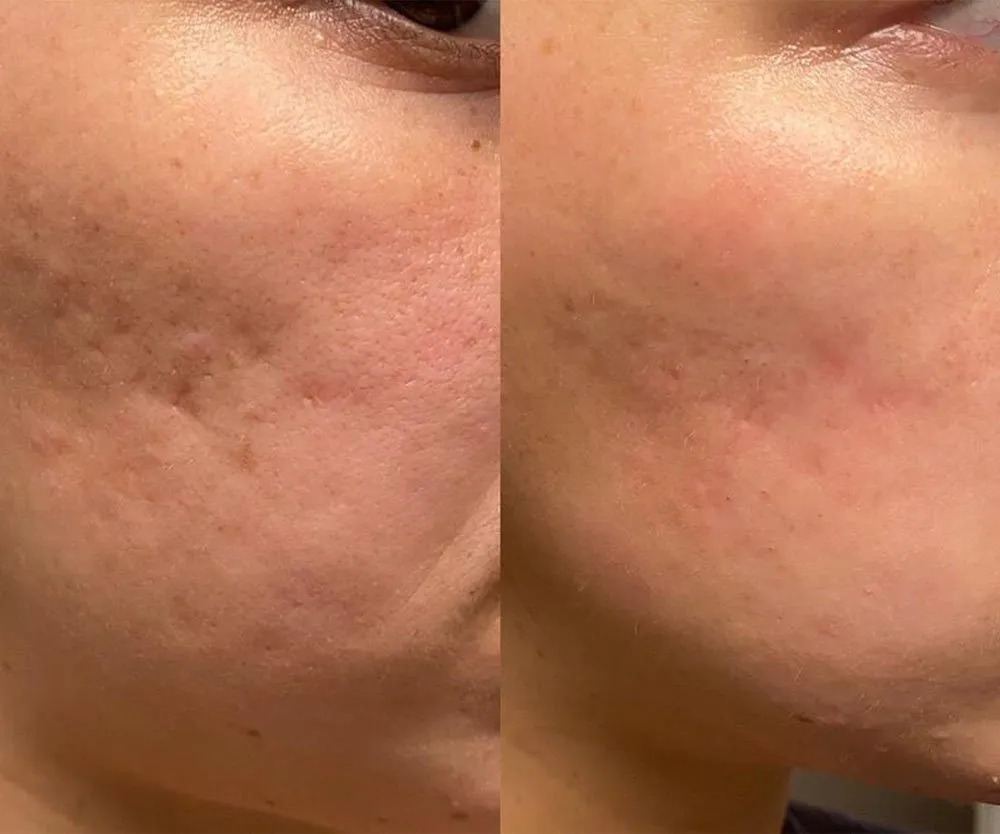
Before And After Microneedling For Acne Scars
Book With Us Today
At Satini Cosmetic Clinic, our doctors train in the latest techniques for treating acne scars. We offer safe solutions to help our patients feel better about themselves and restore their confidence.
Contact Satini Cosmetic Clinic to schedule a consultation and learn how we can help you get smoother skin.
. 2024 May;22(3):226-238. doi: 10.2450/BloodTransfus.536. Epub 2023 Sep 6. Platelet-rich plasma use for treatment of acne scars: an overview of systematic reviews. Mario Cruciani 1, Francesca Masiello 1, Ilaria Pati 1, Simonetta Pupella 1, Vincenzo De Angelis 1 Affiliations

